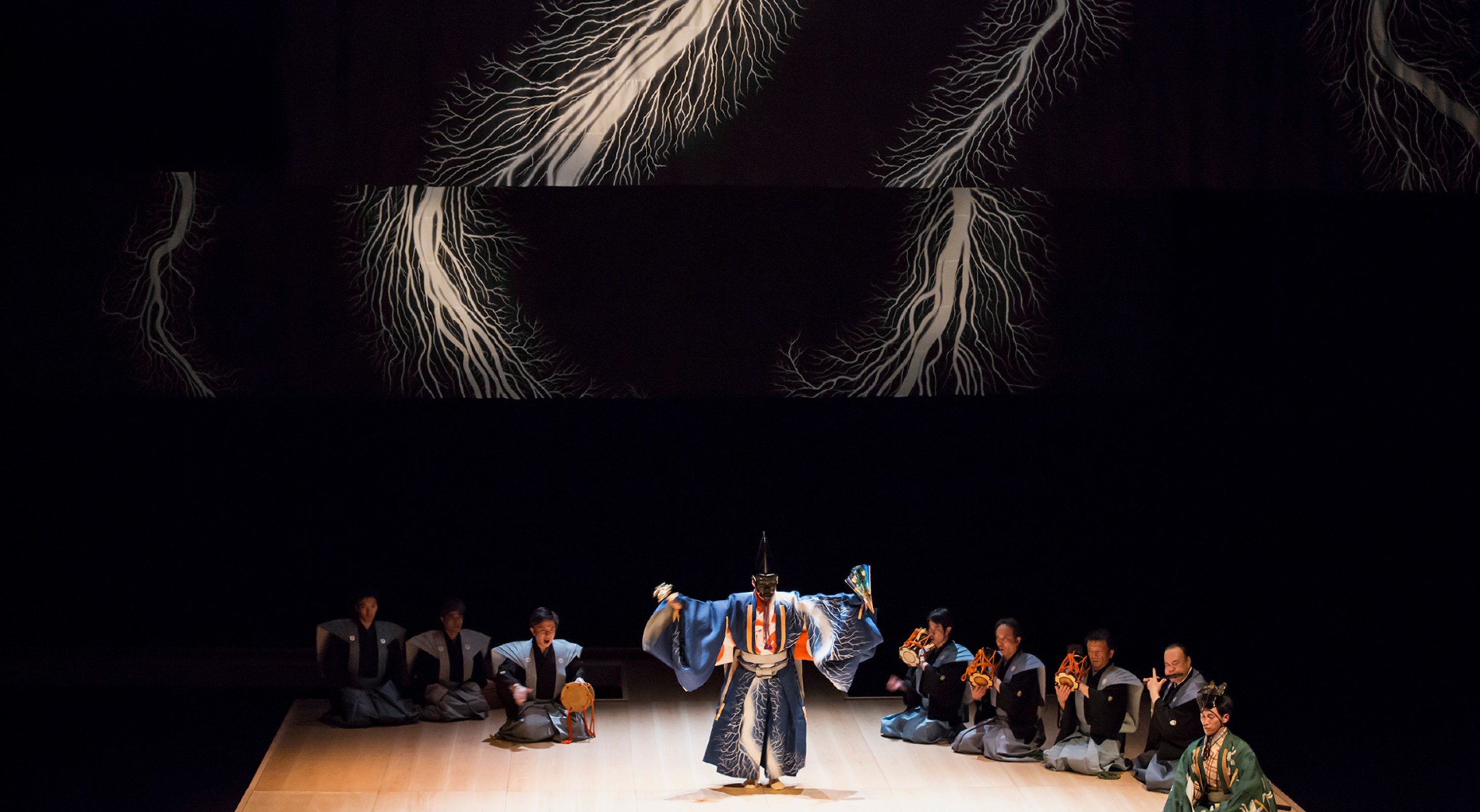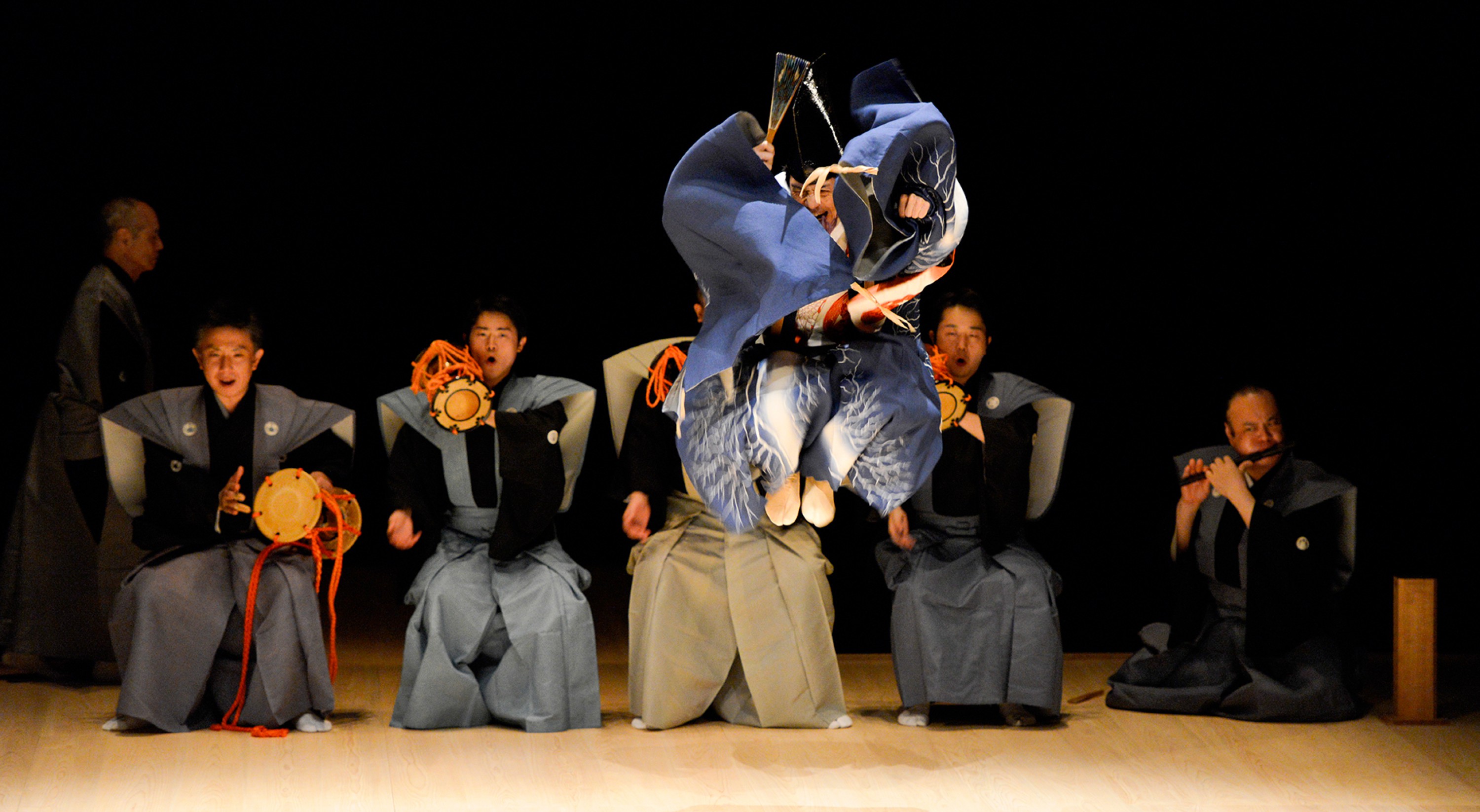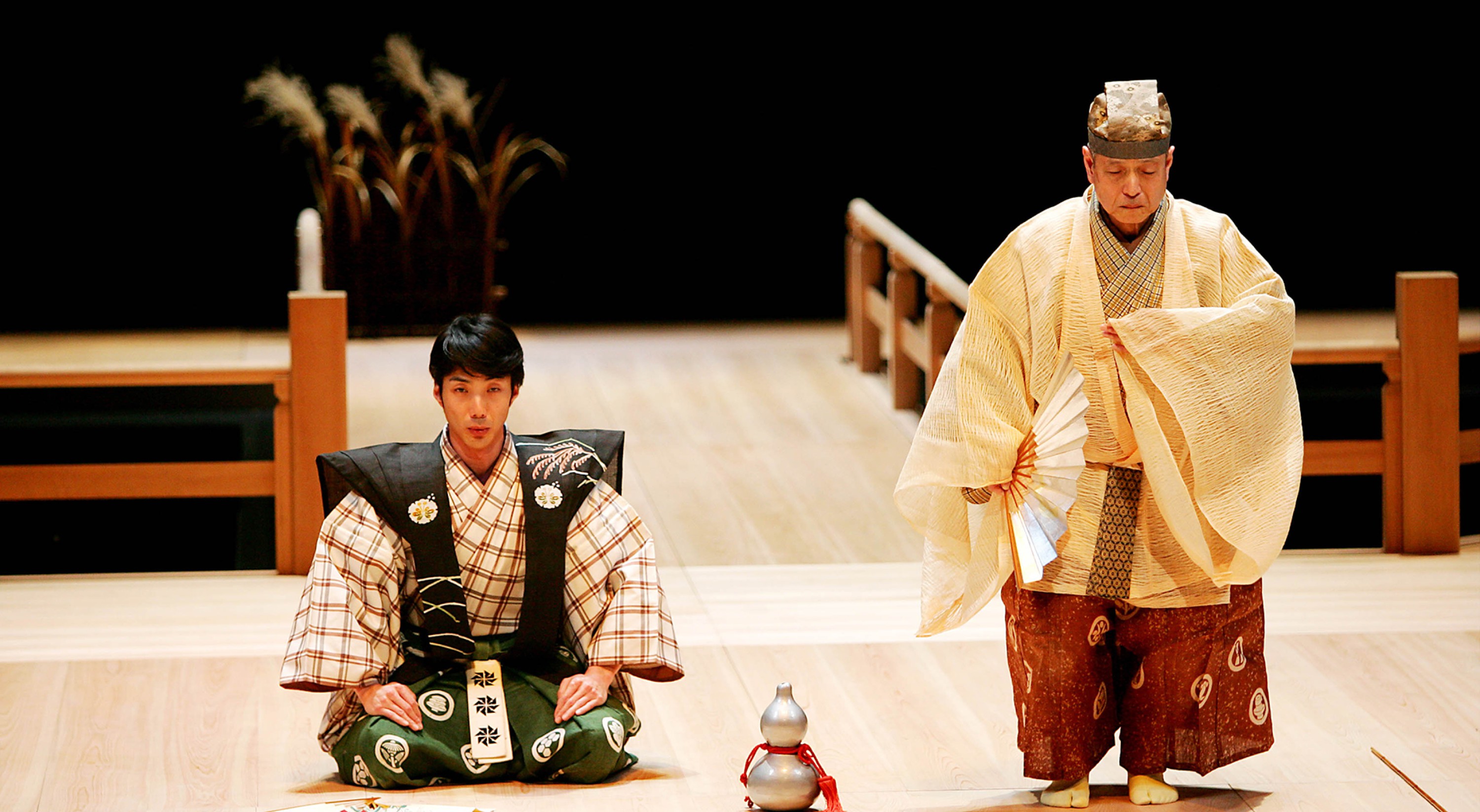Mansaku Nomura Mansai Nomura Yûki Nomura Hiroshi Sugimoto
Sambasô, danse divine
septembersept 19 – 25
Conception and stage design, Hiroshi Sugimoto
With Mansaku Nomura, Mansai Nomura, Hiroharu Fukada, Kazunori Takano, Haruo Tsukizaki, Shûichi Nakamura, Ren Naitô, Gô Iida, Yûki Nomura, Manabu Takeichi, Ichirô Kichisaka, Youtarô Uzawa, Kazuto Shimizu, and Hirotada Kamei
Organised by Fondation du Japon
With support from the Fondation d’entreprise Hermès as part of its New Settings programme
An Odawara Art Foundation production
In association with Théâtre de la Ville-Paris ; and Festival d’Automne à Paris
In collaboration with Setagaya Arts Foundation – Setagaya Public Theatre
With support from the Fondation franco-japonaise Sasakawa
This show is presented as part of Japonismes 2018
First performed on 21 September 2011 at KAAT Kanagawa Arts Theatre as part of the Yokohma Triennial
The Japanese artist Hiroshi Sugimoto continues his exploration of his country’s major traditional stage genre : nô theatre, bunraku or, in today’s world, kyôgen, with two pieces performed by the highly-acclaimed traditional theatre actors Mansaku Nomura and Mansai Nomura.
––––––
Running time : 1h40 (including interval)
Performed in Japanese, with French subtitles


